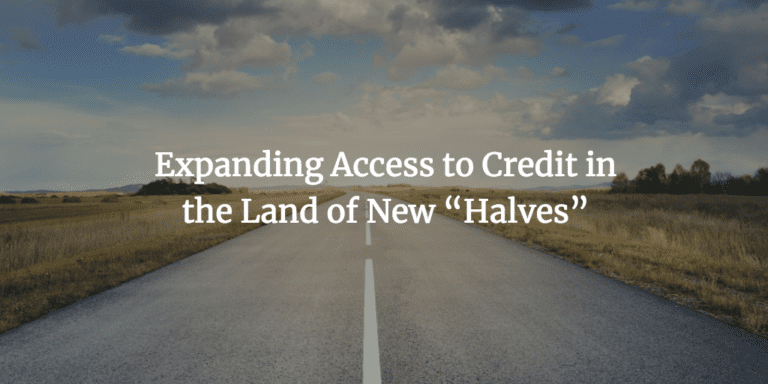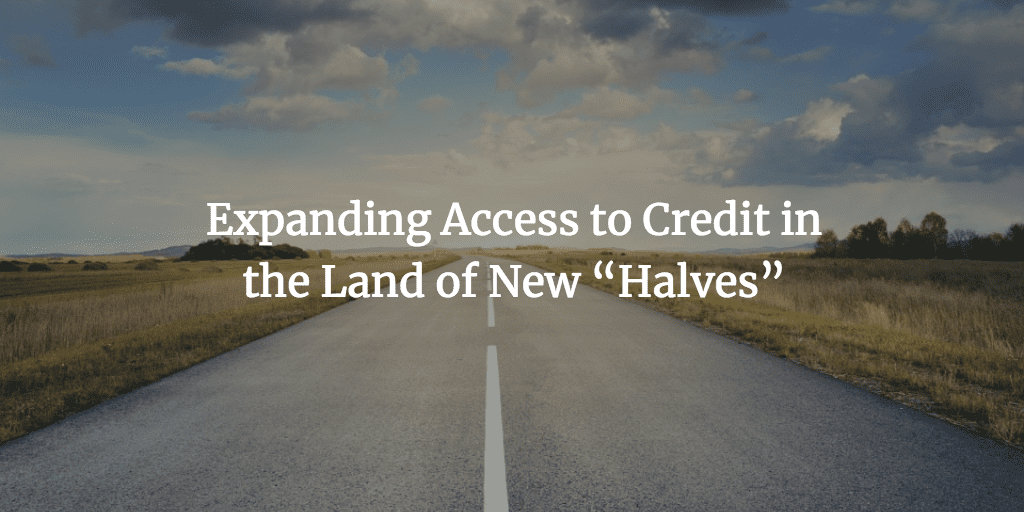[Editor’s note: This is a guest post from Sasha Orloff. He co-founded LendUp and Mission Lane and previously was Senior Vice President at Citi Ventures and in Citi’s Consumer lending divisions. Any views or opinions listed here are his own, or referenced in citations. They are not necessarily shared or endorsed by anyone else.]
Credit is one of the largest, most powerful, lucrative and important industries in the world. It also is one of the best tools for wealth creation – home ownership, small business ownership and growth, and, leveraged investing. This is readily accessible for prime consumers with more options now than ever before. But for the other half of the country that is non-prime, options are still limited and in many cases non-existent.
I was recently asked about what would it take to expand access to credit in the United States. I have thought a lot about this question from various points in my career, from one of the US’s largest banks, from the World Bank, from a non-profit bank focused on financial inclusion and most recently from a fintech company. There are a lot of implications here, and it is hard not to think of academic questions like ‘when is credit a good thing or a bad thing?’ without the memories of the subprime mortgage crisis, or fundamental questions like ‘what is the right structure of a loan?’ and not get overwhelmed with the complexities of federal and state laws, price and duration differences among credit across prime vs subprime, secured vs. unsecured, closed vs. revolving, etc.
There are far more smart and experienced people who can better answer those questions, so I wanted to try and focus on a few tactical and a few high level questions that could lead to profound changes in financial inclusion within the lens of the US consumer credit segment.
How deep and reliable are the sources of capital available?
There have been meaningful changes in the capital markets over the last decade, with additional pools of global capital motivated to invest in this sector. Early pioneers of securitizations like SoFi, the scaling of marketplace lending like Lending Club, Prosper and Best Egg, and new distribution models like Greensky and Affirm have contributed towards increasing comfort of these “new asset classes” that were mostly locked up in bank’s balance sheets. I am not sure many would have guessed that we would see billions of dollars (of mostly prime assets) being originated monthly by non-banks. And despite some hiccups over the last decade the markets seemed to recover quickly and even show an increasing demand across multiple asset classes, which is encouraging.
Can new models improve credit performance through the next cycle?
Let’s first start with the assumption that 2008 taught us (at least) two important lessons – that every credit cycle is different, and that the world is more complicated now than ever before. But when it comes to the traditional framework of consumer credit risk – identity, ability to repay, and willingness to repay, there are some exciting new challenges and opportunities. For identity there is more information now available about businesses and consumers, which means more opportunities to either add confidence to existing identity tools or have confidence in the identity tools for those excluded from the traditional identity data sources. This can help overcome two main challenges for financial inclusion.
First, identity is matching a binary pass/fail during the application process. So if you are a person not already in the traditional identity systems, you are almost certain to be declined. Second is, as banks are closing branches in record numbers, digital solutions could potentially become the only option in many communities.
Second, for ability to repay there are new challenges as our workforce has shifted from salaried jobs, to hourly jobs, to gig jobs where payment is measured to the actual minutes you are working. This income volatility is a challenge for our traditional methods of assessing income, which is an important factor in ability to repay. To address that, we are seeing new technologies, such as Plaid emerge, to help create new opportunities.
Third, for willingness to repay we now have different bureaus with different reporting structures, standards, and the emergence of some bill payment and rental payment data, but it is still fragmented. While traditional credit scores perform well here, especially in prime and near prime, there are unquestionable opportunities for improvement, especially when it comes to financial inclusion. These models can be supplemented with advanced machine learning models that can help stabilize performance across fragmented data availability, but require additional levels of expertise around software, modeling and compliance, which are both complicated and expensive.
As an industry, how do we adapt to shifts with the new “halves”?
There are a lot of new “halves” in today’s world.
- Half of our country have a subprime credit score.
- Half of our country live paycheck to paycheck.
- Half of our country have volatile incomes.
- Millennials and the next generation are approaching half of the workforce, with very different attitudes about loyalty, institutions, and how they spend their money and repay their debts.
The world is more complicated than the days where we picked our bank from that of our parents, or that was located close to our house. These have impacts on financial players in branding, origination channels, underwriting and product design, all of which have major implications on the organization, and communities. Thankfully we are seeing leaders across sectors address these concerns, from the Aspen Institute driving a national dialogue on systemic concerns such as income volatility and debt, the Milken Institute helping drive innovative solutions to the challenges of our current financial system, non-profits like EARN rolling out a national incentivized savings program, and startups taking advantage of shifts by redesigning traditional banking products like Chime and NuBank.
There are encouraging signs that financial inclusion is possible.
We are seeing a few different inclusion models emerge from the tech space, whether intentional or not. These seem to be taking advantage of mobile phones, new datasets, no business models, or a focus on a certain customer segment. I am encouraged not just by the work being accomplished at many startups – by reinventing and rethinking small dollar loans and credit cards as an opportunity to build credit and learn better financial behavior at LendUp and Mission Lane (disclosure: I co-founded these companies), by helping people rent to own their first home with Divvy Homes, by getting access to small lines of credit interest free with Dave, by using your own assets, data and behavioral engagement to access better priced financial services at MoneyLion, by getting paid to go to school instead of taking out a loan by securing your “tuition” with futures earnings at Lambda School or rethinking tuition as income sharing agreements for higher education with Vemo, or by focusing on underserved consumer segments like Oportun and True Link Financial. These models seem to be much more pro consumer and transparent, and it is no wonder they are still relatively small compared to the broader industry, but growing so quickly.
We are also seeing major players start to get interested. There are newer scores that start to take trending into account as well as alternative data, like TransUnion’s Credit Vision Score. We are seeing innovative banks like Fifth Third creating low-cost, transparent checking accounts that have brought in millions of new customers who’d been shut out by other institutions, as well as partnering with Commonbond, Greensky, Apple Pie Capital and many others. We are seeing this expand to other sectors like small business with Paypal, Square, Kabbage and OnDeck.
But much of this country does not have access to these or multiple options. With the impact of fintech thus far many new entrepreneurs have been inspired to start their own companies, and investors are getting more comfortable with new models and new distribution channels. My hope is that the entire ecosystem will think about ways to continue to create, scale and invest in these innovations. They are a big market opportunity, if done the right way.
=====
Here are some additional resources for those interested in fintech and financial inclusion:
- READ:
- Unbanking of America by professor and field researcher Lisa Servon.
- Banker to the Poor, written by Nobel Peace Prize winning Dr Muhammad Yunus called.
- The Financial Diaries by Jonathan Morduch and Rachel Schneider and the great example from research of the Center For Financial Services Innovation.
- Ways to keep up on the industry: LendIt Fintech Blog, Financial Revolutionist, Confessions of a Fintech Junkie, PYMNTS and the Money2020 firehose.
- I am forever in awe and admiration of the Federal Reserve Research, listed here.
- LISTEN:
- Fintech players: Peter Renton’s LendAcademy
- Fintech, regtech and financial inclusion is Barefoot Innovations by Jo Ann Barefoot.
- Bank innovation with Breaking Banks with Brett King.



